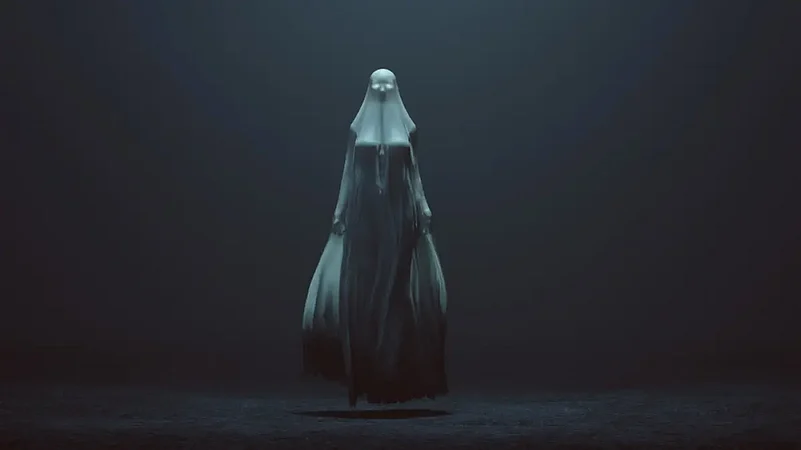Delhi is a city of stories and storytellers. We love our chhole kulche, kebabs and our stories (not necessarily in that order). My earliest memories of storytelling in Delhi are of late 1980s and early '90s. Growing up in a government colony in Sarojini Nagar, our summer nights were spent under the stars with all uncles, aunties, kids, and babies sleeping on the charpoys.
Ghost Diary: Birth Of The Ghoul
A Delhite recalls stories of djinns, haunted havelis, ghosts and mouthwatering street food that made up his childhood in the capital city.

Setting the stage for sleeping outside was an experience in its own. Once the last of the programming on Doordarshan ended, neighbours started trickling out into the common ground in front of the colony. Water was sprinkled on the dry dusty ground to settle the dust and cool the scorched earth, power points were drawn from the nearest electricity pole for table fans, water bottles were wrapped with wet cloth to keep the water cool. And the last thing we did was to set up the?charpoys. When the adults and children started to huddle on the?charpoys, the stories flowed organically, mostly of the city ― stories of resilience, of rebuilding lives post-Partition, Lutyen’s Delhi, the fate of erstwhile villages, stories of khandani pakode wale of Sarojini Nagar and of Nagpal’s chhole bhature. But the sessions always ended with ghost stories – set in the havelis of Mehrauli, in the abandoned houses of Greater Kailash, or the minar opposite the Green Park market.
This is where my love for this city and its ghost stories started. But the stories stopped once I moved out of the community living of Sarojini Nagar to more impersonal "posh"?colonies. To fill that vacuum, I started walking the length and breadth of Delhi to collect these stories. Over the last 20 years, I have wandered around the city absorbing the tittle-tattle and hearsay about places that have been the abode of the supernatural. Stories told by paanwalas whose shops were near a haunted house in Greater Kailash, by cab drivers who dropped us home after our late-night shifts, or by the guards outside Mehrauli’s Archaeological Park.
In the process, I also started writing some of my own stories, inspired by the monuments, events, and characters that I heard about during these sojourns. These stories are not only of supernatural but also stories of human emotions. I remember the emptiness I felt on listening to the story of a mother who was murdered by robbers. Exactly at 1 am everyday (the time the family was attacked), her ghost visited their home to cradle her five-year-old daughter to protect her. Every morning at 1 am, the family found the five-year-old levitating in a cradle position, sleeping peacefully.
Then there are those urban legends that many 90s kids will tell you, such as that of the phone number that when dialled returned noise that appeared to be blood-curling wail of a young boy. The most well-known urban legend of the 2000s was of Rosy – the call centre executive who didn’t join her shift one day. She mysteriously disappeared just like that. The resultant search by her employers and colleagues revealed that Rosy had actually died almost four years back!
My stories trace how Delhi evolved over the years, especially for those who have only seen the city in last two decades. In the story of the Haunted House of Green Park, several readers for the first time learnt how Rajinder ka Dhaba went from being a simple eatery selling chicken curry to the landmark that it is today and that its present location is not where it was originally based.
During the Covid-19 lockdown, I started tweeting these stories on my Twitter handle @thedillimirror. They went viral and people from around the globe messaged us on similar experiences they, their parents, or grandparents had at different places. These stories do not find a place in any of the books about Delhi or in the research papers of purist historians.
These are the stories of the occult practices in Sanjay Van, the deals people make with djinns in the city for the fulfilment of their desires and the price of these deals, and abortion clinics of yesteryears where the past doesn’t stop chasing you. I want to preserve these stories because they are an integral part of the anecdotal and oral history of Delhi.
(Jatin Bhasin is a management consultant who moonwalks the length and breadth of Delhi to collect stories about its ghosts, djinns, prets, chudails and tells them on his Twitter handle @TheDilliMirror.)

























